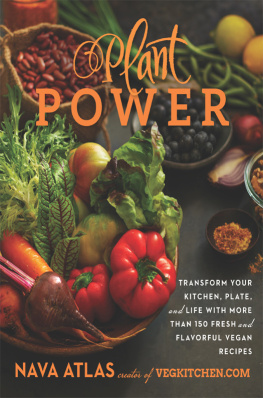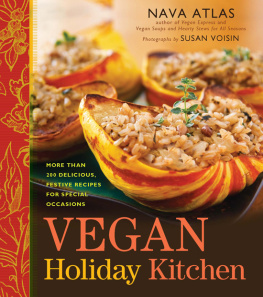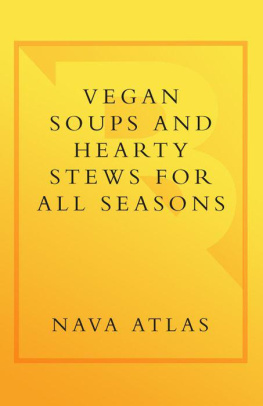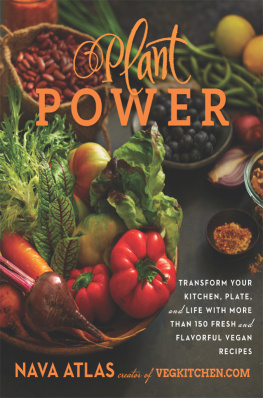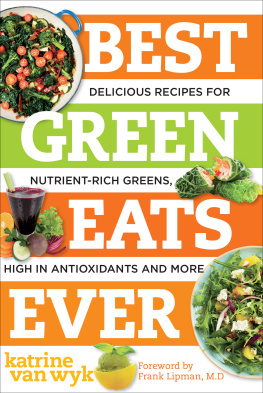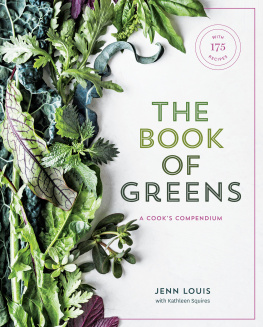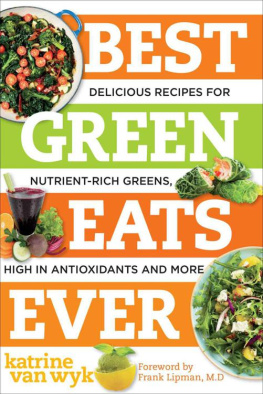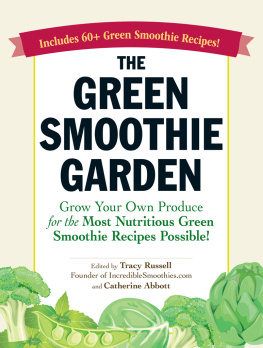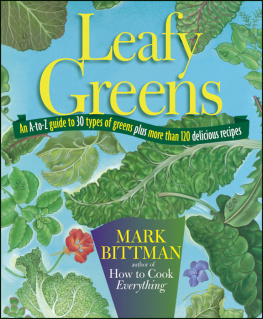

An Imprint of Sterling Publishing
387 Park Avenue South
New York, NY 10016
STERLING and the distinctive Sterling logo
are registered trademarks of Sterling Publishing Co., Inc.
2012 by Nava Atlas
All rights reserved. No part of this publication may be reproduced,
stored in a retrieval system, or transmitted, in any form or by any means,
electronic, mechanical, photocopying, recording, or otherwise,
without prior written permission from the publisher.
ISBN 978-1-4027-8588-7 (hardcover)
ISBN 978-1-4027-9632-6 (ebook)
For information about custom editions, special sales, and premium
and corporate purchases, please contact Sterling Special Sales at
800-805-5489 or specialsales@sterlingpublishing.com.
Book Production: gonzalez defino, ny / gonzalezdefino.com
2 4 6 8 10 9 7 5 3 1
www.sterlingpublishing.com
I d like to thank Josh Atlas, Helen Gutfriend, Ellen Kanner, Harry and Wendy Lipstein, Marie Panesko, Barbara Pollak, Shen J.C. Robinson, and Susan Voisin, who, when it comes to recipes, planted seeds that flourished on these pages. Knowing that Im prone to tinker with any recipe that crosses my path, I hope you will recognize at least the essence of your worthy contributions.
Special thanks go to: my husband, Harry Chaim Tabak, for planting too much chard in 2009, which directly led to the idea for this book; my son, Evan Atlas, for helping to develop the green juices in this book; Seth Branitz and Jenn Liemer Branitz of Karma Road Organic Vegan Deli ( karmaroad.net ) in New Paltz, New York, for allowing Evan and me to use their space to concoct juices and make a mess (which we cleaned up); and to Melissa Mandel, who helped me with research on the background information on all the leafy greens.
This is the third time that Susan Voisin, the deservedly renowned talent behind FatFree Vegan Kitchen ( fatfreevegan.com ), has done the photography for one of my books. Thank you so much, Susan, for recreating my recipes in such a lovely way once again.
Thanks go to Nathalie Lussier of The Raw Foods Witch ( rawfoodswitch.com ) for her helpful article on the benefits of and differences between green juices and green smoothies.
As always, Id like to credit my agents and dear friends, Lisa Ekus and Sally Ekus, who keep me so busy that Im running out of mushy things to say about them. Thank you, Lisa and Sally, for being the most generous and supportive agents ever.
I always save the final word for the editor of any project, as she (as the case is here) is always the unsung heroine of the process. Jennifer Williams has been that heroine for this as well as my previous book, Vegan Holiday Kitchen. Thank you, Jennifer, for being such a warmhearted and fun editor, and for making each book the best it can possibly be.
Also by Nava Atlas
Cookbooks
Vegan Holiday Kitchen
Vegan Soups and Hearty Stews for All Seasons
Vegan Express
The Vegetarian Family Cookbook
The Vegetarian 5-Ingredient Gourmet
Pasta East to West
Great American Vegetarian
Vegetarian Express
Vegetarian Celebrations
Vegetariana
Visual nonfiction
The Literary Ladies Guide to the Writing Life
Secret Recipes for the Modern Wife
Expect the Unexpected When Youre Expecting!
I t wont be terrible if all you ever do with a big bunch of kale, collard greens, or chard is to saut or braise it in olive oil. Your health and well-being will certainly be enhanced if you do little more than toss tender raw spinach, arugula, and watercress into salads. And if the only way that Asian greens make it into your repertoire is when you quickly wilt them into stir-fries, neither you nor the veggies will be any the worse for it. Youre still way ahead of anyone who has yet to make eating leafy greens a daily habit.
But why stop there when theres an abundance of easy ways to prepare and enjoy these supremely nourishing, plentiful, and delicious leafy veggies? Whether you stir them into soups and stews or create vitamin-packed juices and smoothies, greens keep the palate open to delight and surprise. Youll be amazed when you discover how delicious fruit smoothies taste with the addition of spinach and how addictive raw kale salads are. You dont need to follow the old rules anymore about boiling big pots of water (losing vitamins and flavor in the process) to easily prepare and enjoy greens. Stir-fried collard ribbons, anyone?
Interest in leafy greens has proliferated in the past few years, along with their availability, in just about every type of market there isfrom farm markets, produce stands, and Community Supported Agriculture (CSA) farms to natural foods stores and even the local supermarket. Not long ago, in the dead of winter, I was stunned to see an array of at least a dozen varieties of fresh greens right in my none-too-urbane local supermarket; they were a sight for sore eyes and a weary palate. Most were organic, since apparently many greens are easy to grow that way. Rarely do I see limp, unloved greens languishing in the produce sectionconscious consumers are buying up these fresh, leafy beauties before they have a chance to expire.
Ive long been a fan of greens, but with the increased availability of a number of varieties, my enthusiasm for this group of veggies is at an all-time high. When I joined a CSA some years ago, greens of all sorts seemed to be one of the most abundant offerings (from the tender spinach of May to the hardy kale of late autumn, harvested after a heavy frost). I was the official CSA newsletter writer, bartering away an obligation to dig in the dirt (which I prefer to avoid) with a steady flow of recipes and tips for enjoying the produce du jour. While most of my fellow CSA members loved the bounty of greens, they also wanted more ideas about what to do with them. There was always so much to take home!
Although this book doesnt go into the subject of growing your own greens, its well known that leafy veggies are a gardeners delighttheyre easy to cultivate and are at their most delicious when freshly harvested. Some gardens yield a dual delightplants with edible roots and leaves. Turnips, beets, and radishes come to mind. I think its somewhat sad when stores offer only the root without its greens. (The truth is that leaves are far more perishable than the roots.) When you see leafy greens still attached to the root, take full advantage of this double blessing.
A few years ago my husband started a vegetable garden and discovered that, unlike me, he has a major green thumb. The veggies, greens among them, sometimes seemed to flow into my kitchen faster than I could keep up with the harvest. Thats why Ive also included a guide to freezing greens at the end of this introduction (). As delightful and versatile as leafy veggies can be, you might feel as I did at a certain pointwith what I called the Swiss chard explosion of 2009that enough is enough, and rather than giving up the crop to the groundhogs, youll want to harvest, prepare, freeze, and save it for a winters day when it will once again be appreciated and savored in all its glory.
WHAT YOULL FIND IN THIS BOOK
F or the most part, the focus in these pages is on the most commonly used dark leafy greens, excluding lettuces and ordinary cabbages. Ive also opted not to include salad greens like radicchio and Belgian endive (though they do appear in a few recipes), since most cooks are familiar enough with these vegetables and their common uses.
Next page

